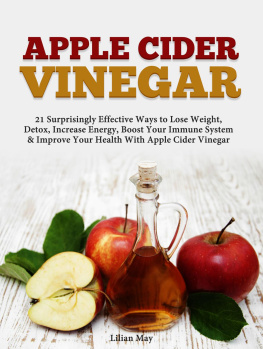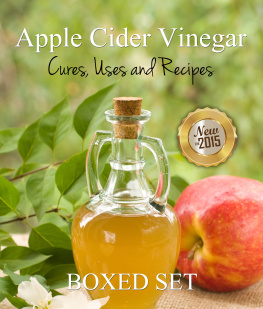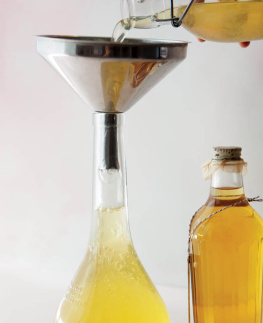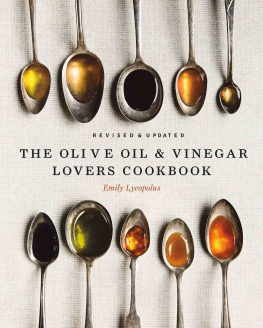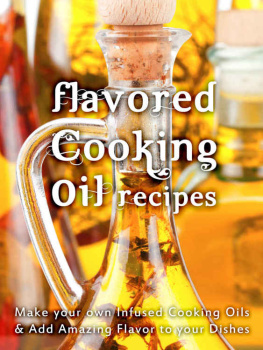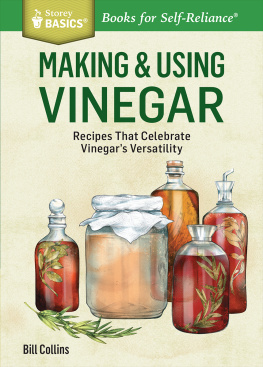Introduction
Do you ever wish you could be a great cook, instead of just a good one? Do you want to recreate that restaurant-caliber flavor at home for a fraction of the price? Do you want to improve your familys health? You can do all of this and more when you add infused oils and flavored vinegars to your culinary repertoire. In this step-by-step guide, you will learn how to safely create your own artisan infused oils and vinegars.
Home-crafting will save you time, money and provide you with a broad array of customization options not always commercially available; once you learn a few basic techniques, you can literally create any oil or vinegar in any flavor you want, any time you want. Whether it is Moroccan mint lamb on Monday or a Tunisian tangine on Tuesday, you will have the needed infused oils and flavored vinegars on hand to make it all possible.
Moreover, since infused oils and vinegars remain fresh for 1 week when refrigerated, you can enjoy the whole gamut of international cuisine every day of the week with very little preparation. From Italian to Greek, Chinese to Indian, reading this book will give you the know-how to present your friends and family with the freshest flavors and the healthiest foods available. Bon apptit and welcome to the world of culinary excellence!

Chapter 1: Infusion 101
In this chapter, you will learn the basics of safely creating infused oils and flavored vinegars. After a survey of necessary equipment, you will preview the two main infusion methods, the cold and warm methods. This chapter will, then, conclude with important information on food and kitchen safety.
Basic Equipment
Once you have the following supplies, you can make any of the oils and vinegars in this book with just a quick trip to the market for any herbs, spices or fruit required for the recipe:
- Olive Oil
- Distilled White Vinegar
- White Sugar
- Food Thermometer (Olive oil or any heated pured mixture containing olive oil must reach a temperature of 180F.)
- One-quart Saucepan
- Small, Shallow Baking Dish (8 x 8 or smaller works best.)
- Colander
- Food Processor
- Blender
- 4 Layers of Cheesecloth (2 Coffee filters may be substituted, if cheesecloth is unavailable.)
- Fine Mesh Strainer (Required for fruit flavored vinegar. Optional for all other recipes.)
- Half-pint Wide Mouth Glass Canning Jars with 2-piece lids.
- If you wish to use jars that have one piece metal lids, you must cover the inside of the lids with wax paper or plastic wrap when storing vinegar or else they will chemically react with one another.
Infusion Method 1: Cold Method
While you could place a fresh herbal sprig in olive oil and keep it there for weeks or months, the following cold method is faster, safer and results in a high-quality product. The cold method is the only option for creating herb and fruit flavored vinegars. It is also the preferred method for infusing olive oil with delicate herbs such as basil, cilantro and mint which tend to lose their flavor in high heat. To use this method, the only materials you need are the ingredients, a one-quart saucepan, a food processor, cheesecloth and a half-pint glass jar in which to store the final product. If you choose to use 2 coffee filters instead of cheesecloth, you will need to stack them, saturate the stack with cold water and wring the stack out well before use. Soaking will quicken the filtering process and ensure that less of the final product becomes permanently trapped in the filter paper.
Essentially, the cold process method usually involves softening herbs by boiling them in water or soaking them in vinegar, food processing them with oil and filtering the oil into glass jars. If you are making flavored vinegar, then merely strain the puree into a glass jar and add vinegar. Close the jar and store in the refrigerator for up to 1 week. It really is that simple.
Infusion Method 2: Warm Method
If you thought the cold method sounded pretty easy, you are in for a treat. The warm method is even easier! Hardier herbs such as rosemary and oregano, as well as hot chilies, citrus peels and dried mushrooms respond well to this method. In the warm infusion method, the ingredients are gently heated until the olive oil or pured mixture reaches a temperature of 180F. This mixture is then removed from the heat, allowed to cool for about 15 minutes and is poured through cheesecloth, prepared coffee filters or a fine mesh strainer into a glass jar. If you are making infused vinegar, add the vinegar to the jar. After cooling, put the lid on your glass jar and store your infused oil or flavored vinegar in the refrigerator for up to 1 week. Once you learn these two methods, you will be cooking chef-quality cuisine in no time.
A Word about Food and Kitchen Safety
We all want the most exciting flavors and the best dishes for our friends and families. No dish, however elaborately presented, is any good if it is made or stored in an unsafe manner. Infused oils and flavored vinegars are no exception. Safety begins with your decision to proceed carefully and diligently follow a few general guidelines. The following procedures will ensure that your cooking experience is both safer and happier:
- Always carefully clean your equipment before using it.
- Store all ingredients in their proper containers. If you do not appropriately store your ingredients, they may become contaminated with nefarious microbes such as Escherichia coli or Clostridium botulinum, the cause of botulism.
- Always supervise children when they are in the kitchen. Even relatively harmless appearing kitchen utensils can cause injury when used incorrectly.
- Keep knives and other sharp items away from young children.
- Always heat oil to 180F.
- Always turn pot and pan handles toward the center of the stove to prevent young children from touching them.
- Use pot holders for handling hot pans, dishes and the oven door.
- Quickly clean up any spills that occur to prevent falls.
- Put all infused oils and flavored vinegars in the refrigerator as soon as they are completely cool. Do not remove them from refrigeration for more than 2 hours.
- Discard any unused infused oil or flavored vinegar after 1 week.
Chapter 2: Benefits of Infusion
Although there are many good social, economic and other reasons for infusing oils and vinegars, this chapter will focus on health and culinary benefits.
Health Benefits
Who can resist a large, lush tropical salad with mango infused dressing or scrumptious garlic mashed potatoes! As you can see, infused oils and flavored vinegars can help you to eat more produce and enjoy it! Research has repeatedly linked a diet rich in fruits and vegetables with a number of positive health outcomes. Whether it is lowering your risk for major diseases such as cancer, diabetes or cardiovascular disease, feeling more energized throughout the day or even just losing a few pounds, infused oils and flavored vinegars can help you meet your health goals.
According to the world-renowned American Heart Association, we should try to reduce the amount of salt and partially hydrogenated vegetable oils we consume because these two substances have been linked with high blood pressure and unhealthy cholesterol levels, respectively. Infused oils and flavored vinegars are more than adequate substitutes for salt. They both have the potential to add so much flavor to foods that you might skip the salt altogether! Moreover, infused oils can impart a smooth, satisfying mouth-feel to foods without the health risks associated with partially hydrogenated vegetable oil.


